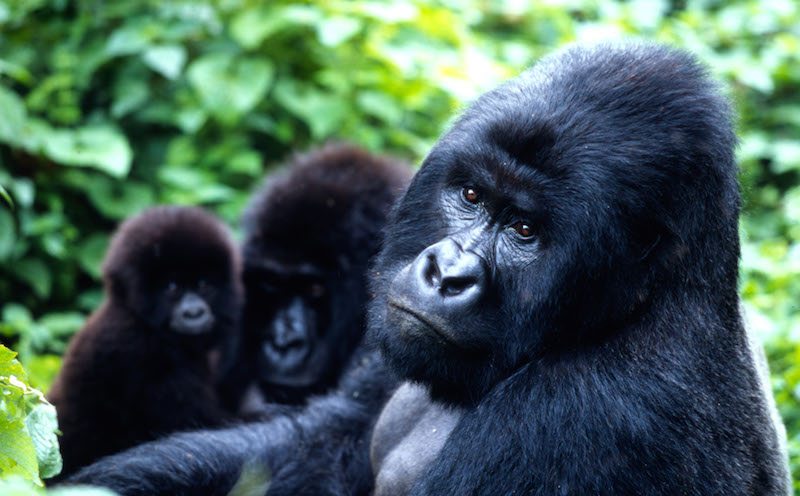Mountain gorilla
Episode #5 of the course “The Most Endangered Species in the World”
In the mountainous regions of Africa, between 8,000 and 12,000 feet above sea level, mountain gorillas rule the trees. With approximately 700 mountain gorillas remaining as human encroach on their natural habitat, humans have to learn to live with these large, long-armed, intelligent creatures. Not often poached for meat or commercial products, they often die defending their territory. Many gorillas simply move deeper into the mountains, where they suffer from the harsh climate.

Larger than lowland gorillas, mountain gorillas have thicker fur to withstand temperatures that drop below freezing. While they can climb trees, they also tend to roam through a ground territory up to 15 square miles and live on an omnivorous diet. Gorillas live in communities of up to 30 extended family members. These primates are highly social, and some have been able to learn simple human sign language.

At around 5 feet tall when standing and weighing around 400 pounds, both male and female gorillas are naturally striking. The groups are led by an older dominant male, often called a silverback gorilla because of his usually graying fur. Challengers to his rule will experience an impressive display of strength and power—pounding his chest, roaring, intimidating them with physical prowess by throwing objects. However, gorillas do not tend to be aggressive unless threatened. Mothers are pregnant with their babies for about 9 months, carry them in their arms or on their backs for the first four to five months of life, and care for their small young until they are over a year old.
Share with friends

